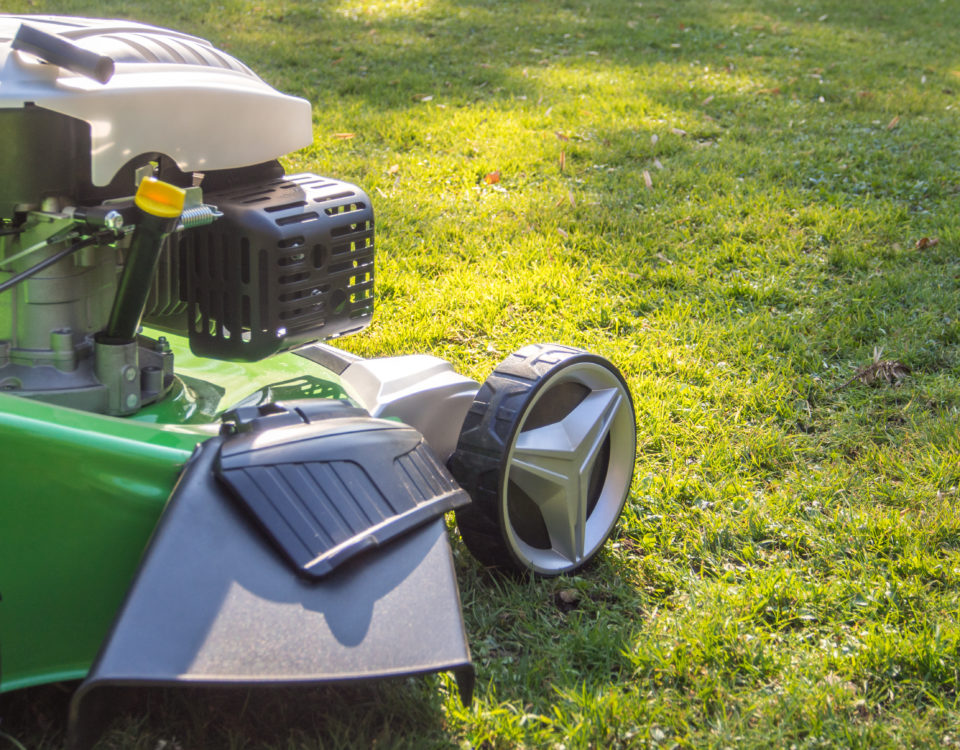
How to choose the power you need in a portable generator
April 10, 2015
Lawn Maintenance Tips
April 28, 2015If you are new to the generator market, it can be pretty confusing to understand the incredible number of differences between generators. In this segment, we’ll explain the differences between portable generators, and give you the main advantages of each.
Generators
Conventional Generators
Conventional generators are the most widely used today, also because they have been around the longest. How they work has remained essentially unchanged. They run on diesel, gasoline or (our choice) propane/lpg, which in simple terms, powers a motor attached to an alternator that produces electricity. The generator’s motor runs at a constant speed (usually 3600 rpm) to produce the required electrical current (in the U.S., typically 120 Volts AC / 60 Hertz, and in most other countries, 240 volts AC / 60 Hz). The engine’s rpm should not fluctuate, otherwise it will alter the frequency (Hertz) of electrical output.
Silenced Generators
As the name suggests, silenced generators have been fully enclosed in a robust sound proof enclosure, technically referred to as an acoustic cabinet. The noise level is less than a framed conventional generator, but higher than an inverter generator.
Inverter Generators
Inverter generators are a recent technology, made possible by advanced electronic circuitry and state-of-the-art magnets. The technology generally outputs AC current like most conventional generators, but the current is then converted to DC voltage, and then “inverted” back to clean AC voltage, thus how it gets its name. The advantage to this inversion, is that it maintains a constant flow of current to your appliance.
So, how to choose what’s right for you?
It depends on a number of factors, including what applications you have in mind and your budget. Let’s take a look at a number of important considerations and how each type of generator fits the bill.
Size / Weight / Portability
- Many of the new inverter generators are small, and lightweight. They are easy to transport and stow away, fitting easily in your car, boat or RV.
- Conventional generators are heavy and bulky, often requiring a substantial metal frame and wheels. Technically, they are portable, in that they can be moved, but they do lack the convenience factor of the smaller, lighter inverters.
- Due to the acoustic cabinet which encloses it, the silenced generator will most likely be the bulkiest to handle between the three.
Fuel Efficiency / Run Time
The run time depends largely on the fuel tank size. Any size fuel tank can be attached to generators, regardless whether conventional, silenced or inverter technologies.
- However, inverter’s are more fuel-efficient and also due to the engine speed which adjusts according to the power load needed. Conventional generators instead normally run at an even 3600 rpm, regardless of the power load. Fuel savings can be significant.
Noise
Noise is one that truly separates the two categories of generators. Inverter generators are designed to be comparatively quiet. Quieter engines, special mufflers, and sound-dampening technology are used to reduce noise to amazingly low levels. As stated above, conventional models run at a constant speed (typically 3600 rpm) in order to produce a stable flow of electricity. Inverters, on the other hand, adjust the electrical characteristics of the power produced using microprocessors and special electronics. This means that the engine can throttle back when the load is light, saving fuel and substantially reducing noise. To give an idea, an inverter generator running low, could be the equivalent of people conversing. Instead, many conventional generators can have the same noise range (decibels) as a chain saw. A silenced generator has the same engine as a conventional generator, running at a constant 3600 rpm, but is much quieter due to the acoustic cabinet which significantly dampens the sound.
Max Power Output
Conventional and silenced generators come in just about any size you want, from 500 watts up to 50,000 watts and higher. Inverter generators focus on convenience, quiet operation and portability, but this means that their maximum output possibilities are more limited – they are mainly available in 1000 to 4000 watt models.
Quality of Power Produced
A conventional or silenced generator is essentially an engine connected to an alternator and run at a speed that produces the desired AC frequency, regardless of the load on it (as the load increases the engine throttles up to keep the engine speed the same). The output of the alternator is connected directly to the load, without any processing. As we talk about the inverter technology in the next paragraph, it becomes clear why quality of power becomes a key point for many when they choose a generator model.
With an inverter generator, the engine is connected to an efficient alternator, which produces AC electricity, just like a conventional generator. But then a rectifier is used to convert the AC power to DC and capacitors are used to smooth it out to a certain degree. The DC power is then “inverted” back into clean AC power at the desired frequency and voltage. The system produces consistent and reliable power independent of the engine speed. The result is much “cleaner” power than is possible with a conventional generator, essentially the same quality of electricity that you typically get from your electric company.
Why is this important? Well, more and more products today use some form of microprocessor. Not just your computer, but also your phones, TVs, game consoles, printers, DVD players, and even kitchen appliances and power tools. And all these microprocessors are very sensitive to the quality of the electricity they use. Using power that isn’t “clean” can make these devices malfunction, or even damage them. Any application that uses sensitive electronics – and that includes a lot more things than you might think – will likely benefit substantially from the cleaner power provided by an inverter generator.
Price
It seems that there are few advantages to a conventional generator except when you need a very high power output. The second main advantage to conventional is price. It’s simple functional design make it not only cheaper but less costly to repair. The silenced generator is of course higher priced due to the additional acoustic cabinet. The inverter has a number of significant benefits: convenience, much quieter operation, fuel-efficiency, design, controlled power output. All this comes at a price, but only you can evaluate how important each factor weighs in your decision and how much you have budgeted for the purchase.






